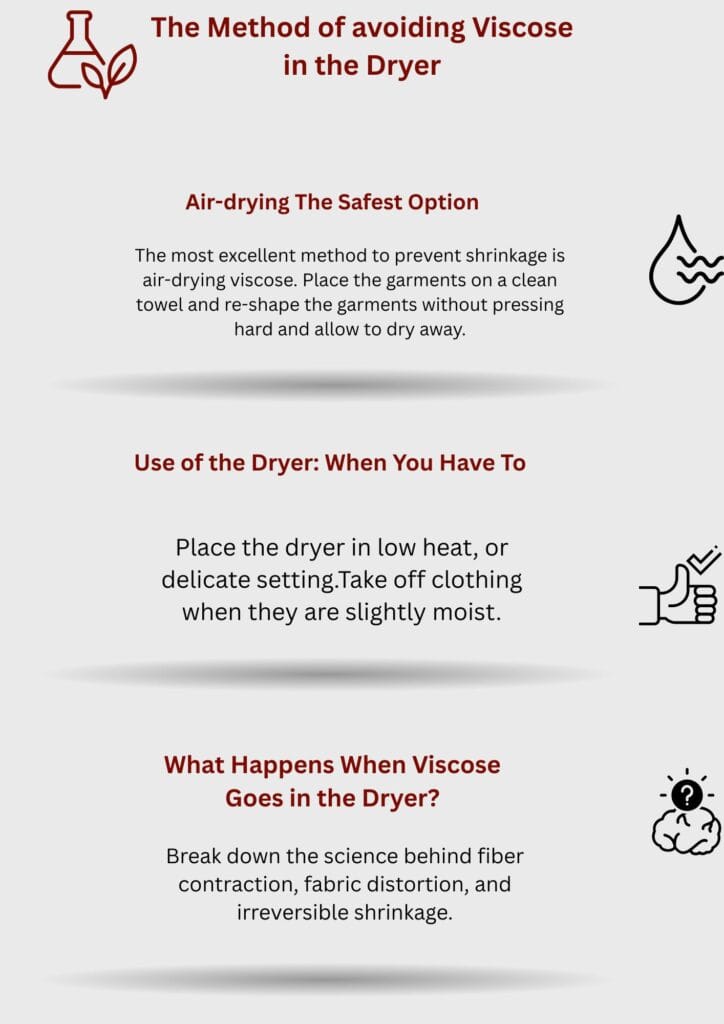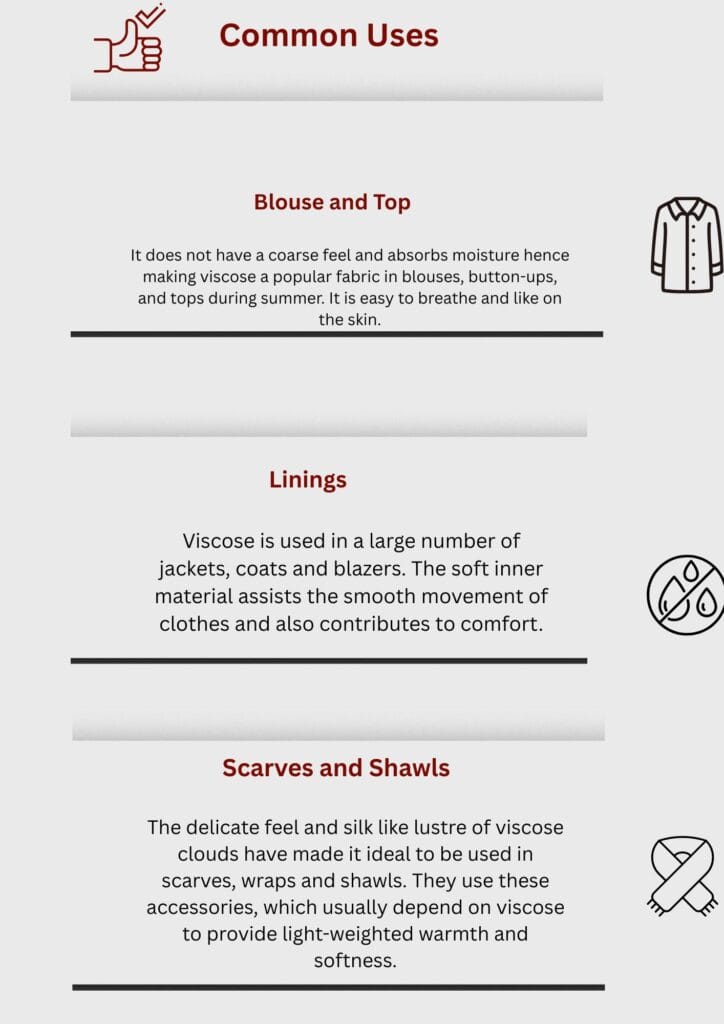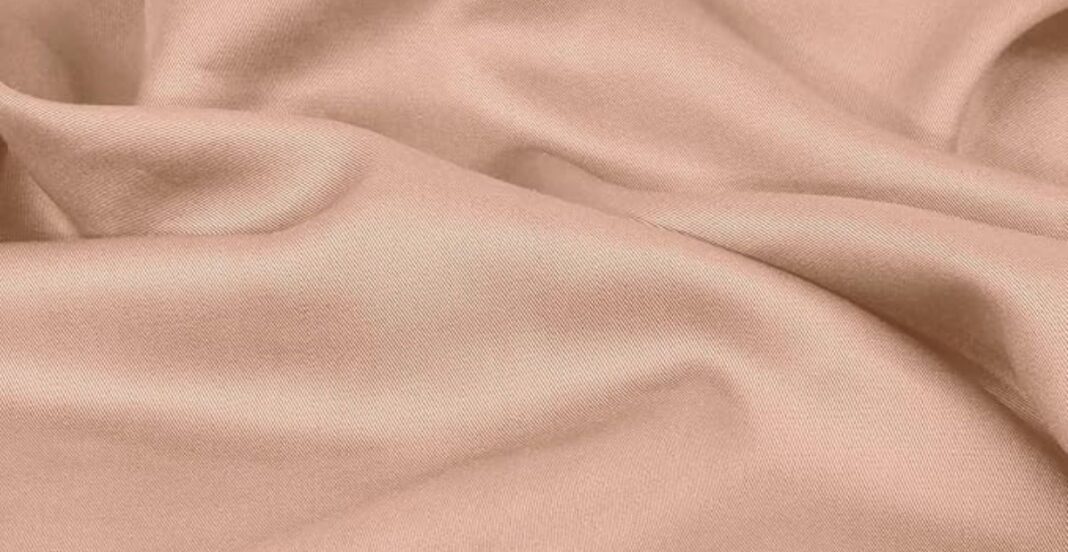Introduction
Viscose is a semi-synthetic material, which is manufactured out of wood pulp, usually out of trees such as beech, pine or eucalyptus. This crude material is chemically treated to produce a soft silky-like fabric. Viscose is a very breathable and light material associated with the making of draped garments driven by the possession of lightweight and elegant looks.
Viscose is more common in dresses, skirts, blouses, linings and also in scarves and it has that luxurious feel yet at a very reasonable price. Declared a classic in fashionable and official clothing, it is rather versatile and comfortable. But the fact is that it is soft and needs certain treatment so as not to lose its shape and texture.
Viscose is associated with one major concern which is shrinking. Therefore, the main question stills stands: Does viscose shrink in the dryer? Here is the real deal, we are going to find out the truth and how you can save your favorite pieces RedStone Houseware Design.
Does Viscose Shrink in Dryer? It is the Straightforward Truth
Yes, yes viscose shrinks in the dryer and sometimes to quite an extent. Also, heat, moisture and mechanical agitation attacks sensitive fibers causing contraction and ultimate damage.
Viscose is particularly susceptible to heat unlike polyester that is more heat resistant or cotton that can shrink but tends to stabilize. Even drying at a medium level can lead to a shrinkage that can be noticed. It is therefore important to find out how to dry viscose.
The reason why it shrinks is due to the fact that when wet viscose fibers lose their strength. Add the heat and movement and the fabric is even more susceptible. This implies that in case of viscose clothing, it is dangerous and sometimes impossible to use the dryer.
What is the amount of shrinkage of viscose in the dryer? Know The Numbers
Normally viscose may shrink 5-10 percent but during a severe situation it is possible to shrink even more. And in case you at least turn the dryer on full blast or dry the article of clothing too long, you may end up losing an entire size (or more).
The shrinkage depends on a number of factors:
- Drying Temperature: The warm the temperature, the more it shrinks.
- Time of Drying: The more exposure the more likely worse damage.
- Textile composition: Blended fabrics have less shrinkage than pure viscose.
Being informed about these variables will allow making better choices about laundry. Remember that after the fibers contract, they most of the time fail to expand back to their natural size.
The Method of avoiding Viscose in the Dryer

Air-drying The Safest Option
The most excellent method to prevent shrinkage is air-drying viscose. Place the garments on a clean towel and re-shape the garments without pressing hard and allow to dry away. This technique preserves the fabric construction and provides that the fabric maintains the original line and fit.
Another alternative is hang-drying though we should use padded hangers to prevent the shoulder marks. Do not leave clothes to direct sunlight as it makes their colors fade.
Use of the Dryer: When You Have To
Safety tips: in case you have no alternative but to use a dryer, remember the following:
- Place the dryer in low heat, or delicate setting.
- Take off clothing when they are slightly moist.
- Do not dry too much in excess-this is where most of the shrinking takes place.
- Look at labels on garments to see what the particular item requires in drying.
Although it is still dangerous to use a dryer, the following measures can minimise a potential harm.
Is it possible to Unshrink Viscose? This is What You Can Give it a Try
It is sometimes the accident. Even in the event that your viscose top or dress has already shrunk, you should also not despair. Although there is no guarantee of size regain, the following can exaggerate some of it back:
Conditioner Lukewarm Water Bathe:
With a basin of lukewarm water into which is added a tablespoonful of baby shampooing fluid or hair conditioner. This makes the fibers delicate.
By Softly Pulling in the Dampened Garment:
Squeeze to get water out, but not wringing, after half an hour soaking. If something is folded leave it flat but, stretch it back to normal gently.
Air dry Flat re-shaped:
Place a hand towel beneath it, and re-shape the garment as it lazes. You are likely to deform the shape by pulling it hard.
Warning: The procedure might not apply to every garment or every blend. In this case, prevention should be more reliable compared to the fix.
The Way Viscose Should Be Washed So as to Shrink Less
Cold Water and Easy Cycles
Washing the hands is best. When a machine is used, one should fully always use cold water and delicate cycle. This reduces stirring up and heating, maintaining softness and design of the fabric.
Do not use Harsh Detergents
Use a gentle detergent that is suited on delicate clothes. Strong chemical stain removers or bleach should not be used, as this would cause the viscose fiber to be weakened.
No Wringing- a Towel Roll will do it.
Wash the garment, then proceed to roll it up in a clean towel to squeeze out the extra water. Do not wring or twist. This prevents its original form being damaged as well as wrinkling.
Do Viscose Blends Shrink in the Dryer? Let’s Talk Fabric Combinations
Mixture of fabrics makes them more stable.
To make them more durable, viscose is usually mixed with polyester, spandex or cotton. All these mixes have a tendency of contracting in size less as the synthetic materials resist heat and moisture such as the polyester material.
For example:
- Viscose-Polyester: Very little shrinkage, less wrinkly.
- Viscose/Spandex: It retains shape as it is elastic.
- Viscose-Cotton:Possibility of shrinkage still present but breathable.
Blend Dependent Drying Reactions
Every mixture acts differently in the dryer. Always read the labels when regarding care and dominant fabric contents. A 90 % viscose blend is still risky whereas a 50/50 blend can probably withstand a sensitive drying session.
Common Myths About Viscose and Dryer Shrinkage
“All Viscose Shrinks the Same Way”
False. Shrinkage is relative to weave, fabric weight and blend. Soft viscose fabric is likely to shrink at a higher rate compared to those that are heavier and tightly woven ones.
“Low Dryer Settings Are Safe”
Viscose is sensitive to even small temperatures. Although it is not as aggressive as high heat, they could still lead to problems. Squeeze is sufficient to shrink when moisture, motion, and warmth are added to it.
“Once Shrunk, It Can’t Be Fixed”
Partially false. There are clothes that may be fixed by stretching. But the success is very unpredictable as the degree of the shrinkage and its quality of the fabric matters.
Expert Tips to Maintain Viscose Clothing
Here are the professional tips to wear your viscose clothes longer:
- Store Carefully: Fold viscose clothes instead of hanging them because they can stretch their shoulders.
- Care Iron: Iron on a low heat setting with a cloth between the iron and the garment.
- No Twittering: Do not ring, twist or handle viscose violently, particularly when wet.
- Less washing: wash only when spot cleaning is not an option.
- Wet After Washing: Viscose should never be stored in a wet state, since this softens up the fibers causing deformation.
These few steps will make your viscose clothes gorgeous even after years.
Common Uses

Blouse and Top
It does not have a coarse feel and absorbs moisture hence making viscose a popular fabric in blouses, button-ups, and tops during summer. It is easy to breathe and like on the skin.
Linings
Viscose is used in a large number of jackets, coats and blazers. The soft inner material assists the smooth movement of clothes and also contributes to comfort.
Scarves and Shawls
The delicate feel and silk like lustre of viscose clouds have made it ideal to be used in scarves, wraps and shawls. They use these accessories, which usually depend on viscose to provide light-weighted warmth and softness.
Conclusion
Drying Viscose, Does it Shrink? Yes, But You Can Ward Off
In short, the answer is: yes, viscose shrinks on the dryer. A combination of the heat, moisture and tumbling creates a fiber contraction formula. However, there is nothing to panic about because washing and drying viscose may also be done with the knowledge of the correct procedure.
Best practices are:
- Air-drying whenever possible.
- Using delicate cycles and low heat if you must use a dryer.
- Being cautious with washing techniques and handling while wet.
Always read care labels, act with intention, and treat viscose as the delicate luxury it is. With just a little extra care, your viscose garments will stay gorgeous and well-fitted wash after wash.
FAQs
Yes, and viscose is very susceptible to be shrunk in the dryer. The humidity and the movement together with the heat cause the breakdown of fibers in the cloth. This makes the clothing shrink by a mechanism often by 5-10% or states more than that in case it is over-dried.
Viscose forms by the use of regenerated cellulose whose force is compromised when wet. Dry, heat and tumbling conditions loosens these already weak fibers, and they shrink and tighten.


